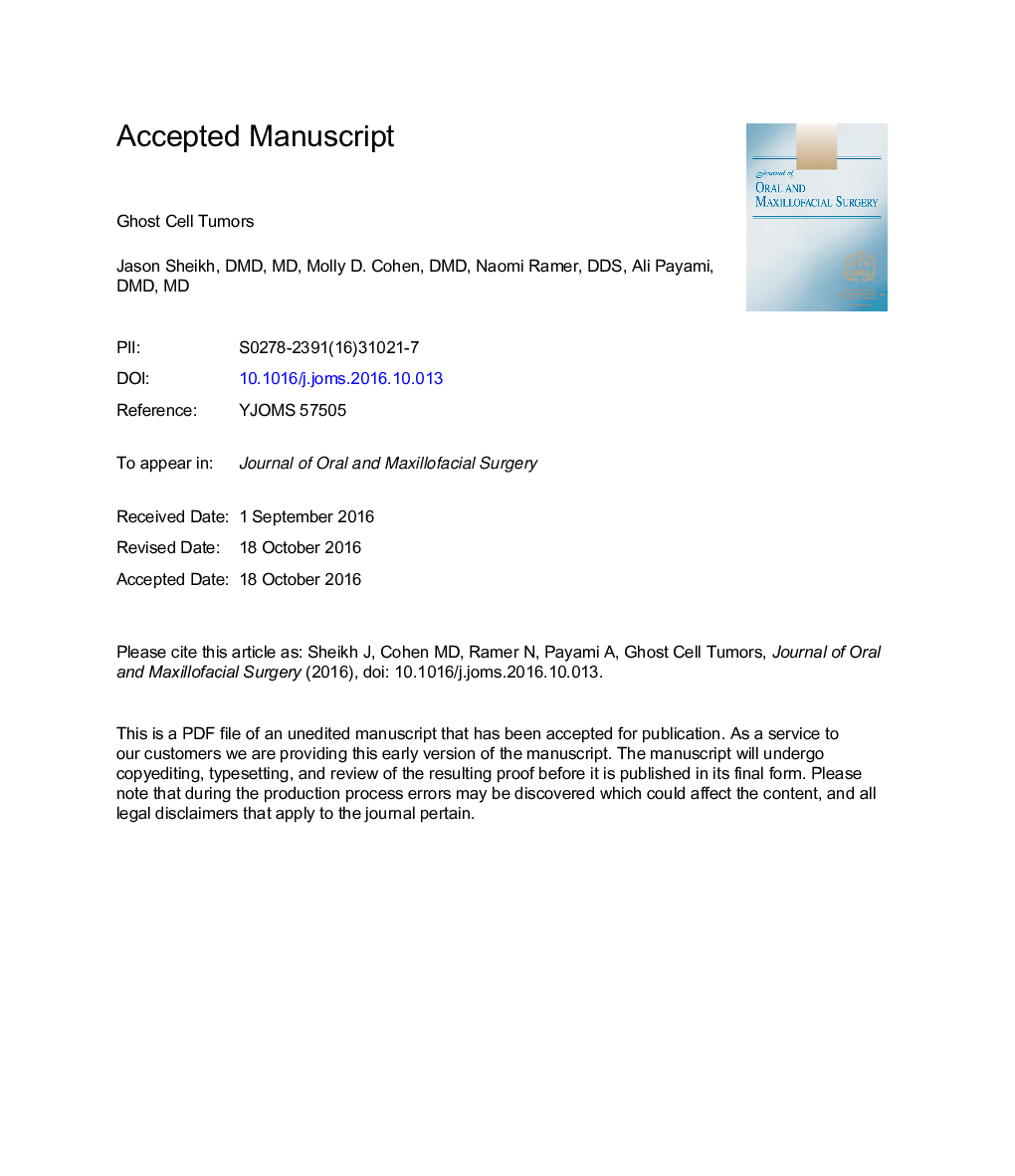| Article ID | Journal | Published Year | Pages | File Type |
|---|---|---|---|---|
| 5641736 | Journal of Oral and Maxillofacial Surgery | 2017 | 25 Pages |
Abstract
Ghost cell tumors are a family of lesions that range in presentation from cyst to solid neoplasm and in behavior from benign to locally aggressive or metastatic. All are characterized by the presence of ameloblastic epithelium, ghost cells, and calcifications. This report presents the cases of a 14-year-old girl with a calcifying cystic odontogenic tumor (CCOT) and a 65-year-old woman with a peripheral dentinogenic ghost cell tumor (DGCT) with dysplastic changes, a rare locally invasive tumor of odontogenic epithelium. The first patient presented with a 1-year history of slowly progressing pain and swelling at the left body of the mandible. Initial panoramic radiograph displayed a mixed radiolucent and radiopaque lesion. An incisional biopsy yielded a diagnosis of CCOT. Decompression of the mass was completed; after 3Â months, it was enucleated and immediately grafted with bone harvested from the anterior iliac crest. The second patient presented with a 3-month history of slowly progressing pain and swelling at the left body of the mandible. Initial panoramic radiograph depicted a mixed radiolucent and radiopaque lesion with saucerization of the buccal mandibular cortex. An incisional biopsy examination suggested a diagnosis of DGCT because of the presence of ghost cells, dentinoid, and islands of ameloblastic epithelium. Excision of the mass with peripheral ostectomy was completed. At 6 and 12Â months of follow-up, no evidence of recurrence was noted.
Related Topics
Health Sciences
Medicine and Dentistry
Dentistry, Oral Surgery and Medicine
Authors
Jason DMD, MD, Molly D. DMD, Naomi DDS, Ali DMD, MD,
